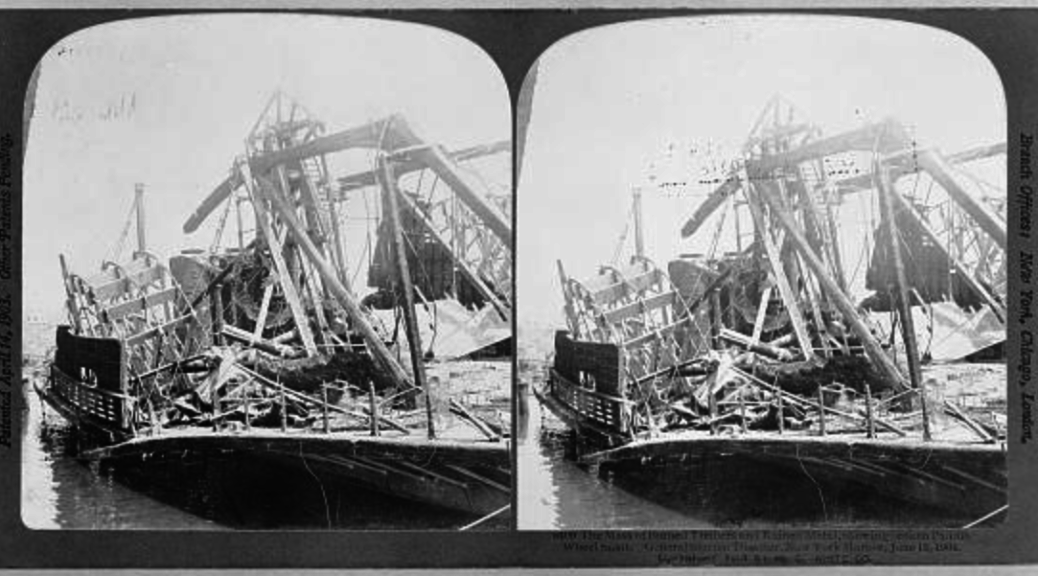More than 1,000 people taking a pleasure trip on New York City’s East River are drowned or burned to death when a fire sweeps through the boat. The General Slocum disaster was the New York area’s worst disaster in terms of loss of life until the September 11, 2001 attacks. It is the worst maritime disaster in the city’s history, and the second worst maritime disaster on United States waterways.
The riverboat-style steamer General Slocum was built in 1890 and used mostly as a vehicle for taking large groups on day outings. On June 15, the St. Mark’s German Lutheran Church assembled a group of 1,360 people, mostly children and teachers, for their annual Sunday School picnic. The picnic was to take place at Locust Point in the Bronx after a cruise up the East River on the General Slocum.
At about 9 a.m., the dangerously overcrowded boat left its dock in Manhattan with Captain William Van Schaik in charge. As the boat passed 83rd Street, accounts indicate that a child spotted a fire in a storeroom and reported it to Captain Van Schaik. Reportedly the captain responded, “Shut up and mind your own business.” But as the smoke became more obvious, crew members were sent to investigate. By this time, the storeroom, filled with a combination of oil and excelsior (wood shavings used for packing), was blazing out of control. The onboard fire hose, which had never been used, tested or inspected, did not work.
Captain Van Schaik made a fateful decision at this time. Instead of directing the boat to the nearest dock where firefighters could engage the fire, he pointed the boat toward a small island in the East River. He later told investigators that he did not want to risk spreading the fire to the dock and the rest of the city, but the strategy proved deadly for the passengers. Instead of grounding the boat on the sand, the boat crashed onto the rocks of the island’s shore.
At this point, other factors also combined to exacerbate the situation. The lifeboats were so firmly tied to the steamer that they could not be released. The life preservers had not been filled with cork, but a non-buoyant material that made them weighty. The children who used them sank to the bottom of the river. Other children were trampled to death in the panic. More people were killed when the raging fire collapsed some of the decks, plunging them into the fire.
In all, 630 bodies were recovered and another 401 were missing and presumed dead. A cannon was brought to the scene and fired over the river the next day to loosen bodies from the river mud. The boat’s crew, and officers in the Knickerbocker Company, owner and operator of the General Slocum, were charged with criminal negligence. However, only Captain Van Schaik received a prison sentence. He was supposed to serve 10 years, but was pardoned due to old age in 1908. President Theodore Roosevelt fired the chief inspector of the U. S. Steamboat Inspection Service in the aftermath of the accident; wholesale changes in the industry followed. A mass grave was set up in Queens for the victims and a yearly memorial was held to honor their memory.
Source: History.com
Image: The Library of Congress – shows the mass of burned timbers and ruined metal, showing broken paddle wheels shaft.
